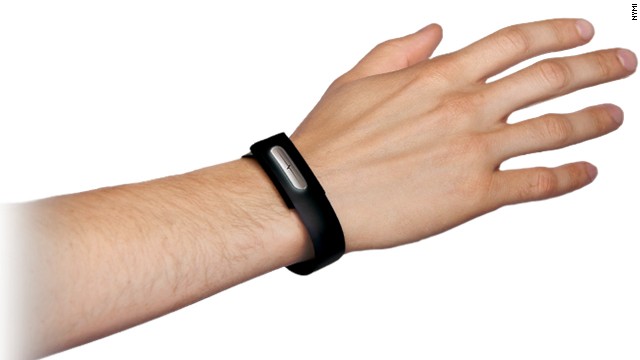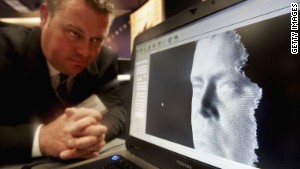Ciencia, tecnología y economía mundial: persistencia de asimetrías y emergencia de nuevos actores
Por Guillermo L. Andrés Alpízar - Rebelión
Aunque en el contexto de la crisis global se asiste a un afianzamiento de los cambios globales que en cifras gruesas determinan un mejor posicionamiento de las economías del Sur, estas transformaciones ocurren de forma muy desigual, afianzando el desarrollo asimétrico de la ciencia y la tecnología por todo el orbe
[04-04.2014]- Actualización 9:00 am de Cuba
Una mirada a la evolución más reciente de los principales indicadores de ciencia y tecnología a nivel global, apunta a una reducción de la comúnmente denominada "brecha" que separa a los países del Norte de los países periféricos. Al respecto las estadísticas de la UNESCO aseveran que si en 2002 los países subdesarrollados ejecutaban el 17,5% del gasto mundial en investigación y desarrollo (I+D) y poseían el 30,6% de los científicos del mundo, siete años más tarde invirtieron el 27,1% y dispusieron del 36% del total de los investigadores (UNESCO, 2013). Sin embargo, ¿Quiere decir ello que se asiste a un despegue real de la ciencia en el Sur? En estos cambios, ¿qué rol desempeñan las economías emergentes y en particular, China?
Para responder a estas preguntas resulta necesario comenzar analizando la evolución de las inversiones globales en ciencia y tecnología durante los últimos años, donde se muestra un incremento sostenido en los volúmenes de financiamiento, los cuales a pesar de ligeras desviaciones han acompañado el crecimiento de la economía mundial. En 1992 los gastos mundiales en investigación y desarrollo ascendieron a 428,5 mil millones de dólares (estos datos se ofrecen en dólares de Estados Unidos, en paridad de poder adquisitivo). Quince años más tarde, ese monto se elevó a 1,16 billones de dólares y para 2009 -el último año disponible con una cuantificación del total mundial- estos fueron 1,28 billones. El incremento en los volúmenes de financiamiento, implicó una ligera disminución en la intensidad global de las inversiones en ciencia y tecnología, pues si en 1992 el total del Gasto Bruto en Investigación y Desarrollo (GBID,) representó el 1,8% del PIB mundial, en 2009 su participación fue del 1,77% (UNESCO, 1996) (UNESCO, 2010) (UNESCO 2013).
Este último año, los países desarrollados, donde reside el aproximadamente el 20% de la población mundial, ejecutaron el 72,9% del total de gasto en I+D, mientras que en los países subdesarrollados, con el 80% de la población restante, esa participación se limitó al 27,1% del GBID mundial. Como promedio, los países subdesarrollados destinaron a las actividades de investigación y desarrollo el 1,11% de su PIB (en el caso de los Países Menos Avanzados fue el 0,2%) mientras que los países desarrollados la media fue del 2,32% (UNESCO, 2010) (UNESCO, 2013).
Al examinar la distribución asimétrica de los gastos en I+D, pueden identificarse otros niveles de estratificación, entre las diferentes regiones o países. Estos contrastes se ponen de relieve con especial énfasis dentro del conjunto de países subdesarrollados. Por ejemplo, en América Latina, Brasil ejecuta el 70% del gasto regional en I+D, y junto a México y Chile esa proporción se eleva al 90%, por lo que los treinta países restantes solo ejecutan el 10%. En el continente africano, Sudáfrica concentra el 40% del exiguo GBID, mientras que al resto de los países subsaharianos realizan el 28,8%. En Asia el 78% del GBID -excluyendo a Japón-, aparece en las cuentas de China, Corea del Sur e India. Si en dicho conjunto se incluye a la nación nipona, el porcentaje se eleva al 85% (UNESCO, 2013).
Este reconocimiento de los múltiples niveles de asimetrías, ya sea entre estados o regiones, aunque pueda involucrar a países con similares niveles de desarrollo, no puede pasar por alto que en las asimetrías Norte-Sur, es donde en última instancia radican los principales desafíos para este último grupo, pues ellas revelan y explican las condiciones de dependencia tecnológica en la cual se encuentra la inmensa mayoría de los países subdesarrollados, mientras que aseguran la utilización de la ciencia como un instrumento de dominación por parte de las economías más avanzadas, lo cual es además un factor decisivo para mantener su status quo en la economía mundial.
Sin embargo, aún en contra del mandato de esta lógica, en el informe de la UNESCO 2010 sobre el Estado de la Ciencia en el mundo se alertaba de un cambio en las tendencias observadas históricamente.
Allí se describe el ascenso del Sur en ciencia y tecnología, el cual se ve reflejado a través del desplazamiento de la influencia científica mundial en detrimento de la llamada "Tríada" (Estados Unidos, la Unión Europea y Japón) y en beneficio de una "nueva Tríada" compuesta por Estados Unidos, Europa y Asia (UNESCO, 2010).
La recomposición en el panorama científico mundial (que se muestra con claridad en varios indicadores agregados), a su vez se ha visto acelerada a consecuencia de los efectos de la crisis económica global, en la cual se han afianzado patrones de crecimiento totalmente divergentes, reflejados en altas tasas de incremento del PIB en algunas economías y mientras que se mantiene la recesión o el estancamiento en otras. Desde el punto de vista de las grandes regiones geográficas, mientras que América y Europa disminuyen en varios puntos porcentuales su participación en los gastos globales de I+D, Asia muestra un aumento sostenido y llega en 2009 a representar el 32,2% de esos gastos (UNESCO, 2013).
En las economías asiáticas, la influencia de los cambios liderados por China ha sido muy significativa en diferentes órdenes. Entre 2002 y 2009 este país pasa del 5% al 12,1% de los gastos mundiales en investigación y desarrollo, alcanzando ese último año más de la tercera parte del GBID regional, mientras que el cambio de su peso dentro del conjunto de países subdesarrollados es aún superior, pasando del 28,5% en 2002 al 44,6% en 2009. Estas variaciones significan, además, que el gigante asiático, con una elevación del gasto de 114,9 miles de millones de dólares, aportó el 55% del incremento del financiamiento observado en los países subdesarrollados durante dicho período, y de mantenerse la actual tendencia, resulta evidente que va acercándose el momento en que China realizará la mitad del total de los gastos en I+D de los países del Sur (UNESCO, 2013).
Desde otra perspectiva, los resultados del resto de los miembros del grupo BRICS, han sido, en cierta medida, diferentes. Según la UNESCO, Brasil realiza el 1,9% del gasto mundial en I+D, India el 2,1%, Rusia el 2,6%, y Sudáfrica el 0,4%. En conjunto estos cuatro países, con un aumento de 43,1 miles de millones de dólares, aportaron el 20,8% del crecimiento del gasto de los países subdesarrollados entre 2002 y 2009, un 37,5% del total del crecimiento aportado por China (UNESCO, 2013). Esto refleja que si bien, visto como grupo, las economías BRICS mantienen un peso decisivo en la evolución de las tendencias de la ciencia y la tecnología para el conjunto de países "en desarrollo" al aportar cerca de las tres cuartas partes del incremento de los gastos en ciencia y tecnología, es evidente que las contribuciones de estos cinco países han sido muy diferentes, mostrando un dinamismo variable en cada uno de los casos. Estas contribuciones han ido, desde la presencia inobjetable de China al frente de las transformaciones globales, hasta condiciones de lento crecimiento, puestas de manifiesto en los casos de Brasil y Sudáfrica, las cuales son compartidas por muchos países periféricos.
Las estadísticas globales, por lo tanto, han visto un incremento sustancial del peso del Tercer Mundo en los indicadores globales de ciencia y tecnología que no responde a una evolución sincronizada y coherente en el desarrollo de sus sistemas nacionales de innovación, sino por el contrario obedece a la lógica de una evolución diferenciada que tiene a países comprendidos dentro del mismo grupo en polos opuestos. Por esta causa el mayor peso que apariencia tienen las economías subdesarrolladas en los principales indicadores científico-tecnológicos globales, tiende a enmascarar la dinámica real del desarrollo científico y tecnológico de este conjunto de países, ocultando el estancamiento en el que se encuentran vastas regiones planeta, lo cual es el caso, por ejemplo, de los países africanos, y en especial de los Países Menos Avanzados (PMA). Es preciso recordar que los PMA están compuestos por 49 naciones, la mayoría de ellas ubicadas en el continente africano, y viven allí 798,5 millones de personas, o sea, el 12% de los habitantes del planeta. El gasto en I+D de ese conjunto de países durante 2009 fue de 2,1 miles millones de dólares (a PPA), lo que representa apenas el 0,2% tanto de su PIB como de su participación en las inversiones globales ciencia y tecnología.
Siete años atrás, cuando el gasto fue de 1,3 mil millones, ese porcentaje fue similar (UNESCO, 2010) (UNESCO, 2013) Por otro lado, en el caso de las economías más dinámicas, los incrementos generados en materia de gastos, investigadores o publicaciones, no garantizan que estos se conviertan automáticamente en desarrollo científico-tecnológico e innovaciones con un impacto significativo en la economía, aunque en el largo plazo contribuyan a crear las condiciones para que eso ocurra. Para los países asiáticos emergentes que participan en dichos procesos, tampoco puede soslayarse el efecto de las prácticas de "maquila intelectual" o transnacionalización de la ciencia, que son impulsadas por las empresas multinacionales, y que por lo tanto dificulta la capacidad para determinar hasta qué punto la innovación es endógena y cual es en realidad el resultado de procesos de deslocalización de la producción proveniente desde los países desarrollados, fundamentalmente Estados Unidos y Europa (Delgado, 2011).
En síntesis, aunque en el contexto de la crisis global se asiste a un afianzamiento de los cambios globales que en cifras gruesas determinan un mejor posicionamiento de las economías del Sur, estas transformaciones ocurren de forma muy desigual, afianzando el desarrollo asimétrico de la ciencia y la tecnología por todo el orbe.
Particularmente los países emergentes han desempeñado un rol fundamental en estos procesos, aunque inclusive dentro del grupo BRICS los resultados son muy heterogéneos, destacándose el papel de China como el actor más dinámico e influyente en ese grupo.












